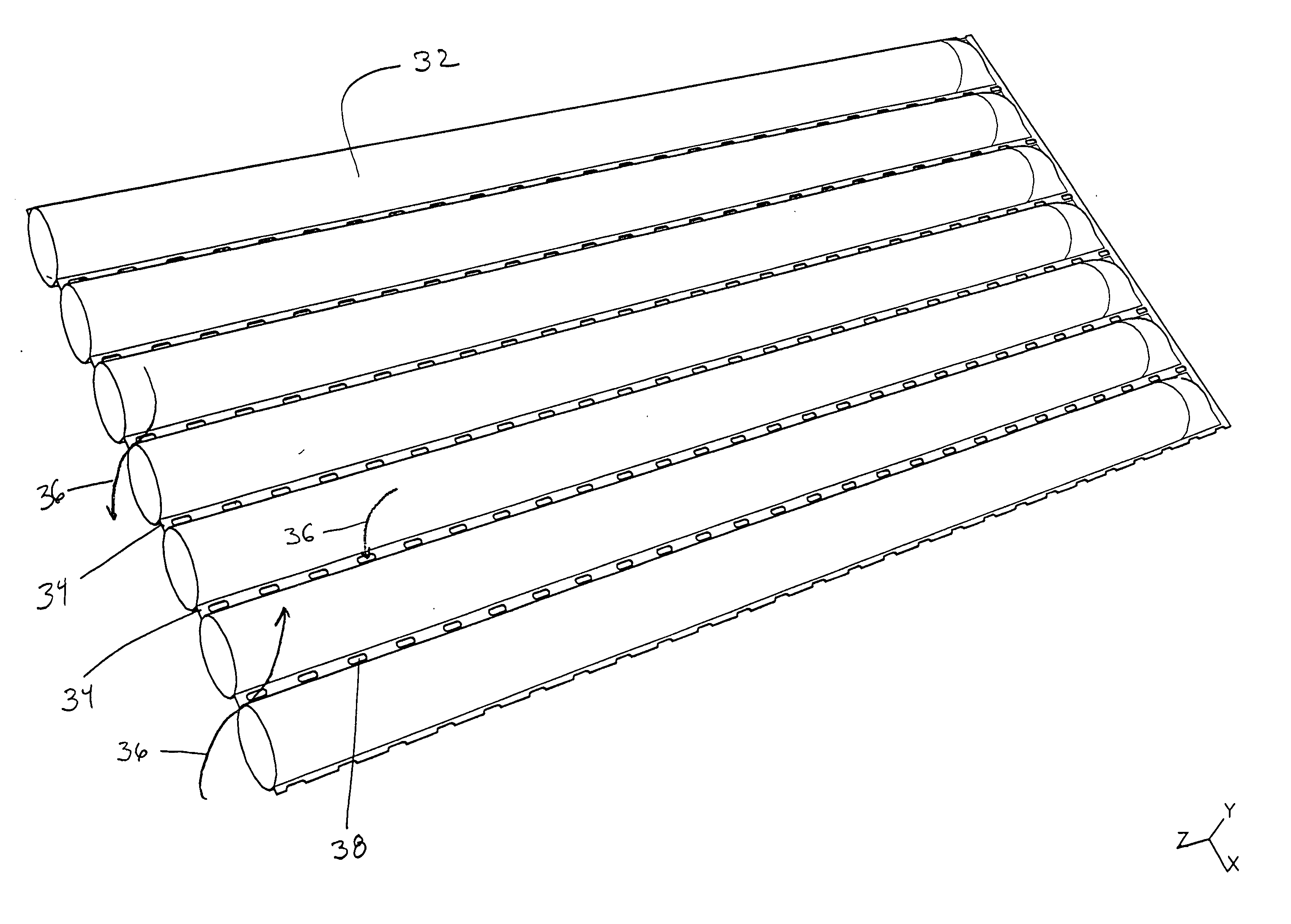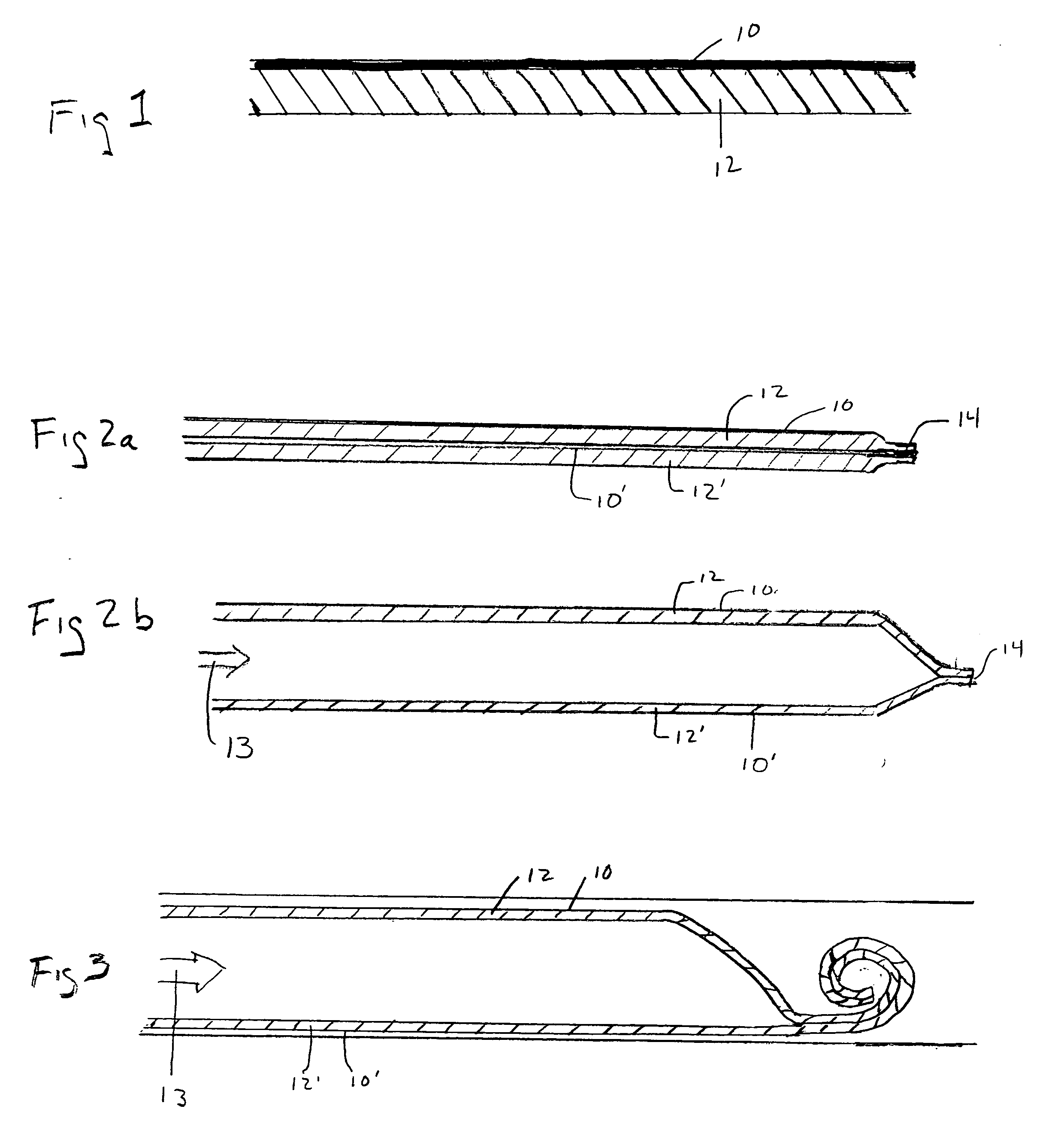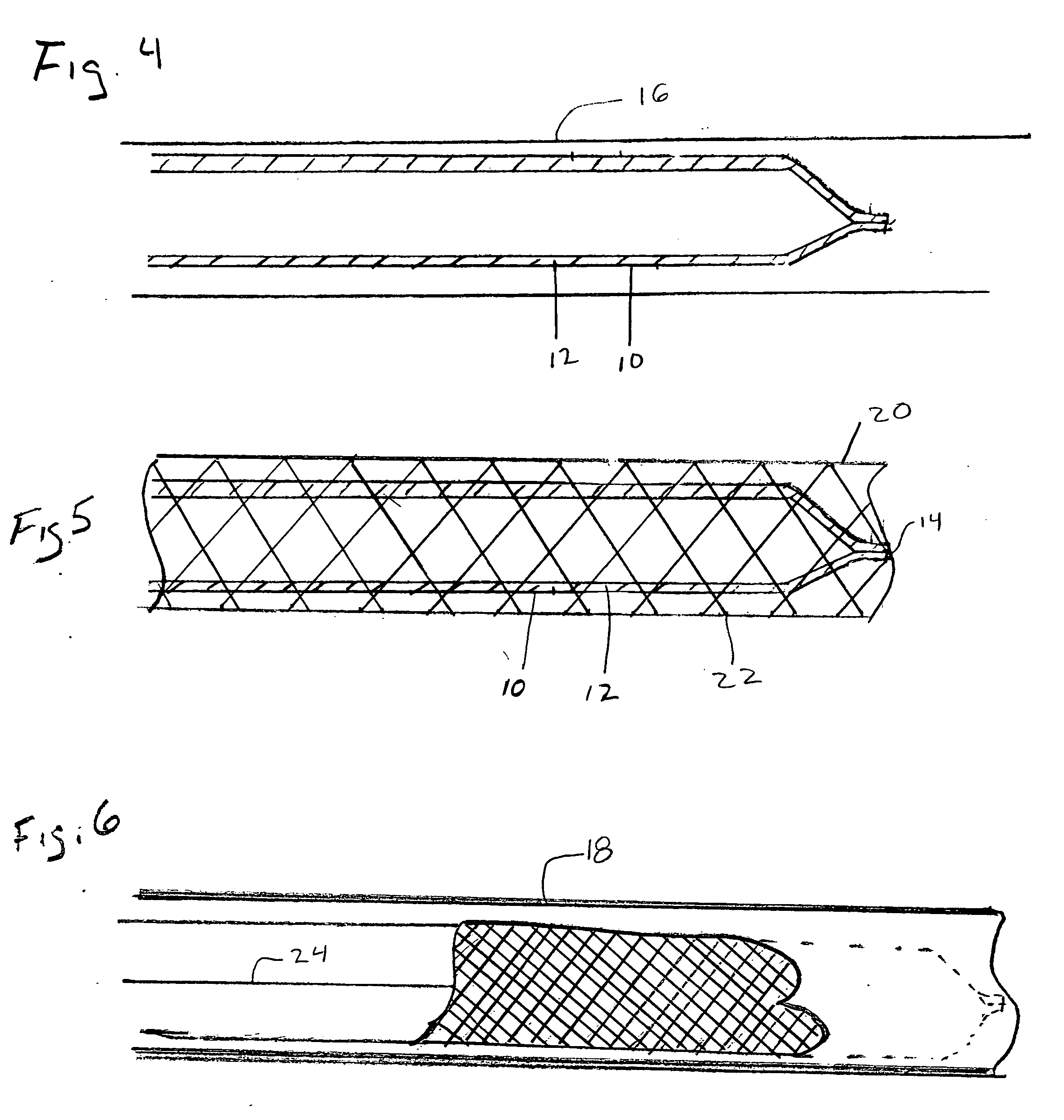Removable duct liner
a duct liner and duct technology, applied in the field of air handling systems, can solve the problems of condensation on the surface of the duct, dust trapped, and inability to meet the needs of space,
- Summary
- Abstract
- Description
- Claims
- Application Information
AI Technical Summary
Problems solved by technology
Method used
Image
Examples
example 1
[0055] A removable liner for a fabric duct was constructed as follows:
[0056] A porous expanded polytetrafluoroethylene film having an air permeability of about 40 F was used as the membrane layer. The membrane is available from W.L. Gore and Associates, Inc., Newark, Del. For support, a polyethylene / polyester spun bond bicomponent nonwoven having a basis weight of 0.45 oz / yd2 (15 g / m2) was used. The material is available from Marubeni America Corp. under the trade name MARIX®.
[0057] A sample of material was tested to determine its filtration efficiency and air permeability. The liner performance is contrasted with the performance of known commercially available porous duct materials availble from Ductsox® Fabric Air Dispersion Products, Dubuque, Iowa. The results are reported in Table 1. It is clear from the data that the duct liners of the present invention show improved filtration performance without sacrificing air permeability. Thus the liner will not signifcantly alter the pr...
example 2
[0058] An 18 F polytetrafluoroethylene filter membrane was laminated to a 15 g / m2 polyetheylene / polyester bicomponent spun bond.
[0059] Two sheets measuring 414″ (10,515 mm) long and 18″ wide were cut from each of the membrane and the support materials. The sheets were superimposed upon each other such the two sheets of support material were positioned between two sheets of membrane material. Both longitudinal edges were heat welded using a hand iron such that all the sheets were joined at the edges. The edges were welded with a 1⅝″ (41 mm) wide weld using a hand iron manufactured by Heat Seal, Inc., Cleveland Ohio. The sealing was performed with the iron adjusted to the high temperature setting. The welder was run along the inside of two reference lines that were spaced 18″ apart. The welding formed a flattened tube approximately 18″ wide. One end of the tube was also heat welded to form the porous duct liner.
[0060] The porous duct liner was folded and rolled up to prepare it for ...
PUM
 Login to View More
Login to View More Abstract
Description
Claims
Application Information
 Login to View More
Login to View More - R&D
- Intellectual Property
- Life Sciences
- Materials
- Tech Scout
- Unparalleled Data Quality
- Higher Quality Content
- 60% Fewer Hallucinations
Browse by: Latest US Patents, China's latest patents, Technical Efficacy Thesaurus, Application Domain, Technology Topic, Popular Technical Reports.
© 2025 PatSnap. All rights reserved.Legal|Privacy policy|Modern Slavery Act Transparency Statement|Sitemap|About US| Contact US: help@patsnap.com



